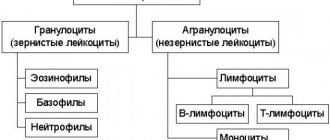Fear
However, sometimes even experienced owners who have owned a rodent for several months wonder why a hamster bites.
A very common reason is simple fear. Don't forget: this pet is not very smart and is quite weak. In the wild, the only way to survive in a dangerous situation is to attack a potential enemy with lightning speed. Without this habit, which became a reflex, hamsters would simply have died out many years ago. Make sure that you do not frighten the hamster or provoke it into aggression and bite. A variety of things that seem very ordinary to you can frighten him: a sharp unfamiliar sound, a changed situation (installation of a new house or wheel, changing the cage), sudden grabbing. Do not forget - each of these situations can be perceived by the hamster as critical, and he will not hesitate to use his small but very sharp teeth.
How to prevent bites
Mostly small children suffer from hamster bites. A child is sometimes unable to understand that a pet is sleeping or does not want to play with it. Often, when taking a hamster out of its cage, a child can squeeze the animal tightly, thereby causing pain. Children also love to stick their fingers into an animal’s cage, not realizing that a rodent in a state of fright can bite.
The child needs to be explained how to properly handle a pet and that you should not try to pick it up when the hamster is sleeping. A sleepy furry animal may not recognize the smell of its owner and consider it an enemy. When visiting, you should also not handle hamsters, as the foreign smell may frighten the rodent and cause a painful bite.
You should not touch the animal when it is eating, or try to take food away from it, in this case the hamster may also show aggression. A newly acquired rodent should not be picked up immediately; the animal must first be given time to get used to its new place. Then, for several days, you can stick your hand with a treat into the cage so that the hamster gets used to the smell of its new owner. If the pet does not want to communicate with a person, it is better not to try to catch him, otherwise the hamster may attack the owner in self-defense.
What to do with an infected hamster
An infected hamster usually dies within two weeks after the first symptoms of the virus appear, but if the animal’s behavior is suspicious, it is recommended to show it to a veterinarian, and he will recommend what to do with the pet. If the animal died on its own, it must be cremated by contacting a veterinary clinic, and the cage must be thoroughly cleaned. To prevent infection in the future, you should not use the same cage; it will be safer to buy a new one.
Did you know? Rabies occurs in the wild on all continents except the coldest, Antarctica.
There are also no reported cases in Sweden, Portugal, Spain and Finland.
The hamster bites: why, how to wean it off. What to do if a hamster bites you until you bleed
Hamsters are one of the most popular pets. Sometimes they can surprise you with aggressive behavior and bite you. We suggest understanding the nature of your pet’s behavior and instincts so that the time spent with your pet brings maximum pleasure.
Why does a hamster bite your finger?
Even an already tamed and domesticated hamster can bite its owner. This is a rodent, and trying everything by tooth is a natural instinct. Therefore, this cannot always be regarded as a manifestation of aggression. The reasons may be different, let’s consider them in more detail.
Female pregnancy
During pregnancy, females perceive any changes very aggressively. Even replacing water with clean water or giving food can provoke a desire to bite the owner.
If the reason for the sudden manifestation of aggression is hormones, you should change bedding, water and food less often, and it is better not to play with your pet for a while. Important! A female with offspring is very dangerous and aggressive. Maternal and self-preservation instincts work simultaneously!
Maternal and self-preservation instincts work simultaneously!
Hands smell like food
Your hands may smell like food. The smell is not noticeable to you, but the hamster picks it up immediately. It is logical that instinctively he must now taste what attracted him so much with its aroma.
Mistreatment of animals
In defense, the hamster may bite you if you pick it up incorrectly or pull it out of the cage. It is correct to grab the animal by the side or from below. It’s even better to open your palm and wait, the inquisitive fluffy will become interested, sniff it and climb into your hand.
Important! Try not to touch the hamster's head, this is extremely unpleasant for them.
Wants to play with the owner
When playing with its owner, the animal may lightly pinch the fingers or skin of the hands. This is not aggression, rather, on the contrary, a playful mood. But if the bites become noticeable and painful, most likely the pet is tired and it’s time to take a break.
Grinds down teeth
If your hamster's diet does not contain mineral stones, branches of fruit trees, or dry dandelion roots, he has a clear problem with his incisors. And with such a deficiency, your fingers are the least he can grind his teeth on. This is a very serious gap in the care of this rodent, which negatively affects its health.
A hamster bit until it bled: what to do and how to treat the wound
If your pet does bite you, do not stress him out by screaming, even if you do not understand the nature of aggression. It’s better to try to find the causes and eliminate them as soon as possible. There is no need to panic, hamsters are not carriers of rabies.
There is no need to squeeze anything out of the lacerated wound. It is enough to wash the bite wound with antibacterial or regular laundry soap, then lubricate it with brilliant green and hydrogen peroxide.
But if your pet has been in contact with other pets, then it can become a carrier of:
- toxoplasmosis (an extremely dangerous disease for the expectant mother);
- listeriosis;
- tuberculosis;
- and, according to some doctors, salmonella and meningitis. Although practice does not confirm this method of transmission of these infections.
If the bite site turns red, bruises, itches, or is swollen, consult a doctor immediately.
How to stop a hamster from biting
As a rule, this brave man attacks children more often, since they spend more time with him and constantly try to pick him up and cuddle him. We need to explain to them that a pet is a living creature, not a toy.
And his teeth are the only way to protect himself from the threat. But if a child is eager to take care of a cute creature, teach him to be more attentive to the animal’s daily routine. You should not pull the animal if it is washing itself or sleeping.
Well, the main rule is to gradually and regularly accustom your pet to handling:
- Start by treating him to his favorite food, stick your hand into the cage and wait until the little greedy sniffs it, gradually remembering your smell, and then swallows the treat.
- The next step is to get him to take the treat from your hand.
- You can switch to tactile contact when he is already fearlessly eating from your hands.
- The final stage can be considered the moment when he allows you to pull yourself together.
By correctly teaching a child or adult how to handle a cute pet, you may well be able to minimize or even avoid animal bites and their consequences. And then your communication with your furry pet will be filled with positivity, positive emotions and nothing will overshadow it.
How to handle an adult hamster
Hamsters do not learn very quickly. Owners often lose interest in their pets after about a month. It is handled less and less and the hamster returns to its scary nature. Just because it was once tame doesn't mean it's still tame.
If you have adopted an adult animal that has not been handled or neglected, start by placing a towel on your lap and placing the pet there. Roll the towel into a nest shape, use your hands to lift the edges to the side you are trying to leave. Make a few folds to hide.
Then start stroking it with the eraser. Be careful because adult hamsters bite quite hard. Treat your pet like a young one. Each taming step will take longer.
Taming Hamsters
If desired, it is always possible to wean a Djungarian hamster from biting, just like any other rodent breed. However, the owner will have to be patient and take care.
To do this, at an early age it is necessary to eliminate all fear factors that cause stress in the animal. Having understood why the Djungarian hamster bites, following simple training rules, you will be able to raise a hamster that is calm and non-aggressive. These rules are:
- You should never disturb a sleeping animal so as not to provoke aggression;
- play with the animal only after washing your hands, especially after eating;
- when the dwarf bites, it is reluctant to make contact, do not touch it.
Taming a hamster usually begins with feeding. Place his favorite treat in the animal’s cage and wait for the hamster to come up to sniff the treat. The hand remains in the cage. It is recommended not to make sudden movements that could cause your hamster to bite your finger.
The next step is to place the treat in the palm of your hand. If the hamster climbs into the palm of your hand, it means that the process of weaning off biting is going well. Now you can move to the next level of training - start the game.
All family members should show delicacy when communicating with a pet, especially for children in contact with it. Only in this case will it be possible to wean the hamster from biting and displaying aggression.
Hamsters are probably ideal as a pet. And some manifestations of aggression are just a demonstration of fear and uncertainty. To feel the love of a pet to the fullest, the owner must show patience, love and affection, in which case his efforts will be more than rewarded.
Prevent hostility
If you begin to notice that your pet’s aggression is developing into a chronic form, and you have eliminated all possible irritants that contribute to this, then you should start educating him. First of all, you need to restore trust in your person, that is, make the animal feel that nothing threatens its safety.
Try hand-feeding your hamster, but this must be done gradually. That is, first, just slowly put some kind of treat into the cage, while without removing your hands from the cage, wait for the pet’s reaction, whatever it may be. He may come close to your hand to study the smell, and even bite you a little (not to the point of blood, of course), this should be taken calmly.
Next, having consolidated the previous stage, you can try to offer to take the food from your palm, waiting until he climbs onto it completely; a little later you can caress the animal without touching its head. Having learned the previous lessons, after the hamster comes out into your palm without hesitation, you can try to pull him out of the cage without removing him from your hand.
What to do if your hamster bites?
A hamster bite is not dangerous, but is not pleasant for humans. It's all about the rodent's teeth - they are sharp and thin, and at the moment of a bite they diverge in different directions, causing sharp pain. A laceration appears at the site of the lesion.
A hamster's bite should not cause a violent reaction, it is contraindicated to hit your pet and shout at it, it will not understand what is going on, but will harbor a grudge
It’s difficult to say whether it’s dangerous; what matters is how you behaved after the bite. To prevent the consequences of a hamster bite, place the rodent in a cage, wash the wound with antibacterial or laundry soap, treat with peroxide and brilliant green.
The disinfection process is very important, because bacteria can cause inflammation. There is no need to press anything from the wound. You can stick an adhesive plaster on so you can continue doing household chores - put on a finger guard.
If a child is bitten and has not been vaccinated against tetanus, get a preventive vaccination.
Rat bite - what to do at home
A rat bite that does not cause any additional symptoms can be easily treated at home. Listed below are the steps on what to do if you are bitten by a domestic rat until it bleeds.
If you are bitten by a rat, you must first wash the wound.
- Wash the wound thoroughly with soap and water
The moment a rat bites a person, you need to immediately and thoroughly wash the wound with soap and water. This will help remove any microbe that is present in the rat's saliva. The best soap to use is an antibacterial one, which actually helps in preventing potential infection of the wound. Then you need to thoroughly dry the rat bite with kitchen paper or a clean towel.
- Stop the bleeding
If the wound is bleeding, it must be stopped. This can be done by placing clean gauze or kitchen paper over the rat bite and applying light pressure to the wound. Placing the wound above the level of the heart will also help stop the bleeding. This will reduce blood circulation in the area, which will stop the bleeding.
- Apply antibacterial ointment and cover the wound
Once the bleeding has stopped, it's time to apply antibacterial ointment to the rat bite. It is designed to neutralize bacteria and can actually help prevent infection. After applying the ointment, it is also recommended to cover the rat bite with clean gauze, securing it with a band-aid. Covering the wound after disinfection helps protect it from germs, dust and dirt.
- Use natural antimicrobial agents
Don't worry if you don't have antibacterial skin ointment in your medicine cabinet. There are other things you can count on to prevent an infestation, and most of them can be easily found in and around your home. Some of the natural remedies that can be applied to a rat bite to cure it include the following:
turmeric. You can make an antibacterial and anti-inflammatory paste by mixing turmeric powder with a few drops of water. The yellow paste should be left on the wound for several minutes; garlic
You need to crush a clove of garlic and gently rub the juice into the rat bite. After a couple of minutes, rinse thoroughly with water.
Leaving garlic on a wound for a long time is not recommended as it may cause irritation; honey. Another very good natural antimicrobial agent is honey. It is better to use raw and organic honey; aloe vera. The gel inside the aloe vera leaf is able to kill bacteria as well as control inflammation. More importantly, this sticky substance can help soothe a throbbing wound.
What provokes
Hamsters often start biting when they are handled. At the very beginning, they do not trust the new owners, and thus defend themselves. After purchasing, you should not pick it up or bring it particularly close to your face. Whatever the rodent is afraid of and does not use its teeth, it must be tamed.
Hamsters show aggression in several cases:
- The female is pregnant or with children. Thus, she wants to protect her family. Sees danger in a person.
- If you harm him. Often the child does not calculate his strength, and this causes harm to the animal. Children must understand that a pet is not a toy.
- A sudden change of scenery. The hamster gets comfortable and does not trust its owners. He needs time to get used to his new home and the people around him.
- There is no chalk or other dental device. You should definitely buy this accessory at a pet store.
- You should not hit a rodent, especially in his house. This is a fortress where he should feel protected.
- The pet may become restless and cause harm to its owners.
A common reason is the wrong location of his house. Do not leave in a draft. It is also worth monitoring the temperature in the apartment. The norm is 20-22 degrees. Hamsters are afraid of cold and heat.
It is advisable to quickly tame the hamster. You need to put your hand into the cage with his favorite treat. Pets often prefer fruits, vegetables and chicken. Food should be without salt and spices. There is no need to remove your hand, let the animal sniff it
After the meal, you need to show attention and pet the animal. Thus, he will begin to trust his owners. If after such manipulations your pet still bites, it is better to consult a veterinarian
The most popular breeds are the Dzhungarik and the Syrian hamster. They need to be tamed from childhood, since this will be difficult to do in adulthood. The friendliest of all the jungars. This breed is great for children
If after such manipulations your pet still bites, it is better to contact a veterinarian. The most popular breeds are the Dzhungarik and the Syrian hamster. They need to be tamed from childhood, since this will be difficult to do in adulthood. The friendliest of all the jungars. This breed is perfect for children.
The bites of these pets do not harm human health, but cause discomfort. If the animal does not want to eat, is in a good mood and has had a good night's sleep, it will not bite a person just like that.
These animals can bite when defending themselves from danger, when they mistrust the owner, or in case of improper handling. To avoid being bitten, the rodent must be tamed. The main reasons why hamsters bite may be the following:
- If the pet is female, she may bite when pregnant or with offspring. In such cases, bites are caused by the instinct of self-preservation and concern for the life of the cubs.
- If the rodent was hurt. Usually, small children, playing with a fluffy, can unintentionally squeeze it or crush it. The response will not be long in coming and the child will be bitten by the hamster.
- You should not pick up a Djungarian or other hamster immediately after purchasing. He needs to get used to the new environment, otherwise he will bite.
- The animal's teeth are not ground down. To do this, he needs to be given crackers or chalk specially designed for grinding teeth.
- If the pet was purchased for a child, first of all, adults should tell the rules of behavior with the animal, explain that it is not a toy and how to give yourself first aid for a bite if the hamster has bitten until it bleeds.
If for some reason an animal bites an adult or child, under no circumstances should he be beaten for this.
For the first few days after purchase, the rodent is in a stressful state, both from the new place of residence and from other people whom the animal does not yet trust. Therefore, you should not touch your pet.
The animal gnaws in the following situations:
- if the female is pregnant, in anticipation of the offspring the rodent is aggressive due to the instinct of self-preservation. The big threat comes from a female with hamsters;
- the animal feels pain when picked up incorrectly, this often happens when a pet falls into the hands of a child, when too much force is applied to the animal;
- A rodent will also bite when it gets into a new home, because it is embarrassed and stressed. It is recommended not to touch the pet; it will need to adapt to the new place;
- you need to prepare in advance so that the animal has a place to grind its teeth. These are crackers, special chalk. If you don’t provide your pet with what it needs, it will start gnawing on everything, including the owner’s hands;
- When buying an animal, children should understand that the animal is not a toy, it requires care and proper handling. It is also better to inform the child what needs to be done when bitten by a hamster, because children often panic and cry, frightened;
hamster bite
Possible reasons
A hamster bites when it senses danger.
A pet will not bite its owner, especially to the point of drawing blood, without a good reason. We will look at the main factors that provoke aggression in a hamster.
- Fear. The case when a child takes the hamster from above, holding its back. The animal does not understand what is happening, gets scared and defends itself by biting. In such a situation, it can bite its owner repeatedly.
- A hamster can be frightened by a sudden movement or any unexpected action at the moment when a child is playing with it.
- Your baby's smelly hands can arouse your hamster's interest in a new smell. Especially if it smells like something tasty, and the animal is also hungry. As a rule, such bites are single and shallow.
- An attempt to protect themselves or their offspring is observed in pregnant females or animals that have recently given birth. If this is your situation, you need to know that it is unacceptable to handle either a pregnant or recently given birth hamster or her babies.
- Trying to grind my teeth. Hamsters have long, sharp incisors and front teeth that continue to grow throughout the animal's life. Therefore, the animal needs constant grinding. If a rodent does not have objects in its cage to sharpen its teeth on, it may bite your hand when it finds itself outside its territory. Therefore, it is recommended that the animal in the cage have a branch of a fruit tree or root parts of plants, a cracker.
- The hamster will bite if the child squeezes it tightly in his hand, that is, it will cause direct pain to the animal.
- A bite can occur in a situation where the hamster has just been brought into the house. The animal is frightened by a change of environment; it needs time to adapt. It is unacceptable to immediately pick it up.
How to avoid loss of offspring
To ensure that the female does not harm future children, it is necessary to adhere to some rules:
- mate only hamsters that are not related;
- provide a sufficient amount of protein in the diet of the expectant mother;
- the optimal age for the first pregnancy is considered to be 3-4 months;
- do not touch the mother in labor with her offspring for the first week; only after this period is it allowed to change the bedding and clean the cage.
It is possible and even necessary to avoid a hamster destroying its own offspring. To do this, it is enough to follow simple rules for the care and maintenance of a pregnant female.
Is a hamster bite dangerous?
Hamsters bite painfully and their bites take a long time to heal. This is due to the anatomical features of the jaws and the rather large size of the teeth. When a rodent bites, its incisors penetrate under the skin and move apart a little, which causes tissue rupture. A laceration can bleed quite profusely and takes much longer to heal than puncture or cut wounds of similar size.
However, the main danger is not the fact of the bite itself, but its depth, because an infection can be introduced into the wound, and it can only be properly disinfected from the outside
Therefore, it is very important to pay attention to the following:
- bites from domestic hamsters that live in the house for a long time and do not have contact with other animals pose virtually no threat to health,
- bites from a wild, recently acquired or unhealthy hamster should not be ignored, because you can become infected with dangerous diseases from it.
The average incubation period for diseases in a hamster is approximately 10 days. After purchasing it, it is worth organizing a two-week quarantine. During this period, do not introduce the animal to children and care for it yourself. And if after 10-14 days the hamster does not get sick, then you can introduce him to the child, since the answer to the question: “Is the bite of a pet hamster dangerous?” you already know.
Do hamsters have PMS?
Yes. Females have reproductive cycles like any mammal. Occurs approximately every 10 days a year, more often in the summer.
If animals do not mate, they may have a period called pseudopregnancy (pseudocyesis), which lasts 7-15 days. It also affects their mood. Females ovulate at night and are very irritable during this period.
Ovulation is determined by hyperactivity: they run much more, collect a nest. The period lasts about 14 hours. This is the time when males often attack and bite their owners.
Symptoms of a hamster bite
Since hamsters have long and sharp teeth, the bitten area will be very painful. Depending on the depth of the puncture, a significant amount of blood may appear. Pain in the bite area for 48 hours is normal. In the future, they must pass on their own.
After a bite, you may experience an increase in temperature and mild headaches.
If blood continues to be released even after 10-12 hours, pain and dizziness do not disappear, it is recommended to consult a specialist. This indicates the development of an infection. Only doctors can cope with it.
You need to know the signs that indicate your pet has rabies. The great danger of a hamster bite is the possibility of infection with this disease. The symptoms are:
- the animal becomes aggressive and loses fear;
- when keeping several pets, the likelihood of fights and collisions increases; in other individuals, traces of deep bites, blood, and wounds are noticeable;
- the appearance of white saliva, discharge in the form of flakes from the mouth;
- refusal to drink water;
- probably eating litter, garbage and other inedible objects - this occurs on the third day from the moment of infection.
This last change in behavior is critical. It may be accompanied by intestinal perforation. At the final stage of rabies, paralysis develops. It leads to death due to suffocation or damage to the cardiovascular system and brain. Therefore, it is necessary to be aware of the symptoms of rabies in hamsters.
Dangerous moments
Due to its aggressiveness, the hamster was popularly called “evil carbysh”. And although most doctors claim that hamster bites are not at all dangerous for humans, they still never go away painlessly. The whole point lies in the characteristics of the bite. Such a wound is more dangerous than those that can be obtained from other rodents, since the animal is distinguished by long and sharp incisor teeth. At the moment of the bite, the incisors move slightly apart, resulting in a deep laceration on the body.
If the hamster was not vaccinated, or this happened at the market, you should definitely go to the doctor and get a rabies vaccination.
The second point: ferrets can be carriers of meningitis and salmonellosis, a dangerous intestinal infection.
Despite the fact that the hamster has long and thin teeth (incisors) and at the time of the bite it inflicts deep, lacerated wounds, the bite itself does not pose any danger. Especially if the hamster is vaccinated and has not been in contact with other animals.
I would like to reassure you right away - the child is not in danger of contracting rabies, but germs can get into the wound. Therefore, the resulting wound is still worth treating. To do this, just rinse thoroughly and lubricate it in any way that is familiar to you, like a cut or scratch - with iodine or brilliant green.
If your child is still bothered by a hamster bite, you can seek help at your local emergency room. There you will be advised on further actions and the possible need for special treatment of the bite wound.
If you do not know for sure whether your hamster is vaccinated, take it to the veterinarian and get a tetanus vaccine. It’s better to be safe than sorry, because we are talking about a child’s life!
It should be noted that the effectiveness of specific treatment is directly dependent on the time of seeking help after a bite. Vaccination as early as possible (within 24 hours) is crucial for the formation of immunity. When prescribing a course of vaccinations, the doctor must take into account the nature of the contact, the presence of cases of rabies in the area where the contact with the animal occurred, the type of animal, information about it, the circumstances of the bite, etc. as well as the whole complex of violations of the physiological state of the victim.
Treatment measures may be discontinued if the animal remains healthy after 10 days of observation. To avoid similar unpleasant situations in the future, we advise you to talk with your child. Explain to him that under no circumstances should you wake up a hamster or try to pick him up while he is sleeping, since after sleep his sense of smell does not immediately turn on, and he may mistake his owner for an enemy. You can’t just kick him out of the house and scare him.
The animal is also afraid of chirping. Some also turn over on their back. And some hamsters are simply afraid of the sound of voices if you don’t talk to them for a long time. Well, if the hamster is well-fed, completely healthy and in a good mood, he will never bite! Hamsters are very good-natured animals, and you should not be afraid for your health when getting a hamster.
Despite the fact that the hamster has long and thin teeth (incisors) and at the time of the bite it inflicts deep, lacerated wounds, the bite itself does not pose any danger. Especially if the hamster is vaccinated and has not been in contact with other animals.
Treatment measures may be discontinued if the animal remains healthy after 10 days of observation. To avoid similar unpleasant situations in the future, we advise you to talk with your child. Explain to him that under no circumstances should you wake up a hamster or try to pick him up while he is sleeping, since after sleep his sense of smell does not immediately turn on, and he may mistake his owner for an enemy. You can’t just kick him out of the house and scare him.
Consequences of a bite
If a Syrian, Djungarian or other type of rodent bites you, this will lead to the formation of a miniature wound that heals fairly quickly. When bitten, an increase in body temperature can sometimes be observed, the wound swells slightly and breaks out. These are the signs that indicate that the wound has become infected.
Please note that you will never get a disease such as tetanus or rabies from a hamster in your life. Naturally, provided that he has not previously visited such an animal world, in which there may be a cat or a dog that has similar diseases
For children, such bites will be considered more dangerous than for adults. First of all, this is due to the fact that children are good at scratching the area where infection can easily enter. And it’s not always the case that children tell their parents that such a situation has occurred. In any case, the wound must be washed and disinfected. Naturally, many are interested in the consequences and what to do if a child suddenly becomes ill. Immediately after this action on the part of the rodent, for several days you should monitor both the behavior of the pet and your own child. If there are no changes at this stage, then everything is in perfect order.
Algorithm of actions in case of a bite
Even a gentle animal can bite your finger when it is hurt, frightened or forced to defend its home. Punishing a pet is inappropriate; the rodent will not understand why it is being punished, but it may become embittered towards the offender. Therefore, after a bite, it is better to send him to the house and start cleaning the wound.
If a hamster bites and bleeds, what should you do at home? Initially, the wound is washed with laundry soap. Next, clean the bitten area with peroxide, if necessary, apply adhesive tape.
Once the bitten area has been treated, your pet will need to be examined for the presence of disease. Take a good look at the face and abdomen. If there is no swelling accompanying baldness and discharge of pus from the eyes, nostrils, ears, and there are no visible symptoms of bites, then the hamster must be returned to the cage. Observe for 2-3 days how the animal behaves.
If there are disturbances in the actions of the rodent, contact a veterinarian, which will allow you to find out whether the animal poses a threat to the owner or not.
When children are bitten by a hamster, what should they do in case of such a bite? In the event of an attack by a wild rodent, health assessment is impossible, so the first thing that is done when a hamster has bitten is to give children a tetanus vaccine. Having given the injection, you no longer need to survive if your child is bitten by a hamster. Also watch how the wound heals and the following manifestations:
- temperature rise;
- enlarged lymph nodes;
- pathology in the bitten area.
temperature increase
When at least one symptom appears, you should immediately go to the doctor. And also if the bitten areas of the body are swollen, this indicates an infection; you need to immediately visit a doctor.
The risk of infection from biting a finger or hand is negligible, but there are infections that can spread from animals to humans. In addition to rabies, these animals transmit salmonellosis and meningitis. After these bites, the behavior of the rodent is controlled.
If aggression or anxiety appears, seek medical help. You should also visit a doctor if the wound was left by an animal from the countryside or field, because the threat of infection increases.
Contagious diseases of hamsters
Contrary to popular belief, hamsters very rarely get rabies. So far, not a single case of human infection with this disease after being bitten by a furry rodent has been recorded. But the list of possible diseases carried by pets, unfortunately, is not limited to one item.
The most dangerous diseases that hamsters can carry are:
- Tuberculosis. The pulmonary form is widespread. The sick animal gradually loses weight and loses activity.
- Listeriosis. It affects the central nervous system, which leads to impaired coordination of movements.
- Toxoplasmosis is dangerous for pregnant women as it can lead to impaired fetal development. It is tolerated by children and adults asymptomatically and does not cause complications.
- Tularemia. The disease progresses at the site of penetration, then spreads throughout the body. The external manifestation is similar to ulceration of the skin.
Toxoplasmosis is the only disease that can be transmitted to animals asymptomatically. Other diseases, one way or another, affect the appearance and activity of the pet.
Hamsters can be carriers of toxoplasmosis
What can you get infected from a hamster?
If your pet is vaccinated, there is practically no risk of infection after a bite. But if the animal has not been vaccinated or the owners do not know about it, it is necessary to urgently take measures to disinfect the affected area in order to avoid long-term treatment in a hospital bed in the future.
A person can become infected from a hamster:
- Tuberculosis.
- Listeriosis.
- Toxoplasmosis. This disease is dangerous for pregnant women.
- Ringworms.
- Tularemia.
- Parasitic diseases, etc.
But you shouldn’t because they are afraid of their pet. The chance of getting infected from it is minimal. To avoid the negative consequences of a bite, you need to learn how to properly handle the animal and not provoke it into self-defense.
Following the recommendations will save you from unpleasant moments, and your furry pet will bring joy.
https://youtube.com/watch?v=cJ2cxgtgpbk
Any breed of rodent can bite. Hamsters are cute and playful creatures that quickly get used to people and allow themselves to be held.
But there are times when this fluffy little ball can turn into a real wild animal and even bite its owner.










